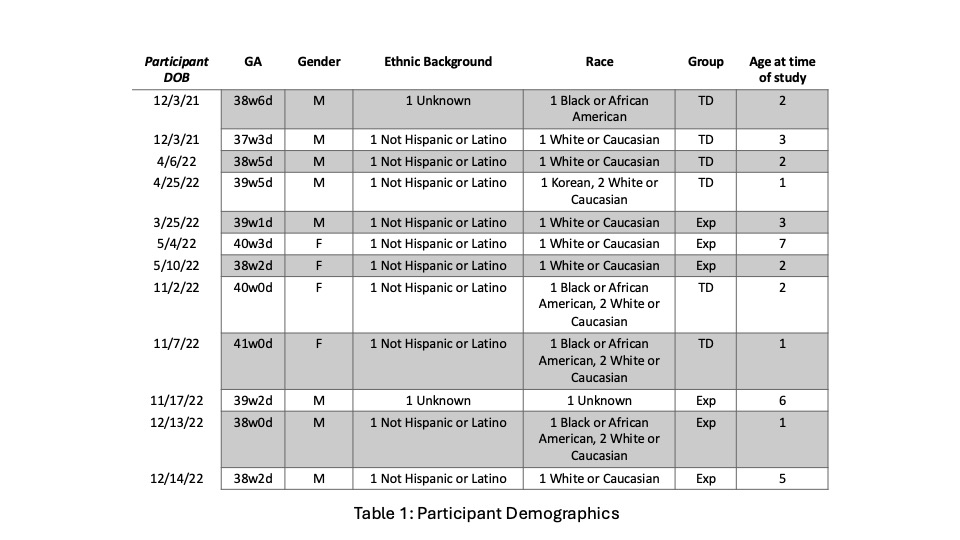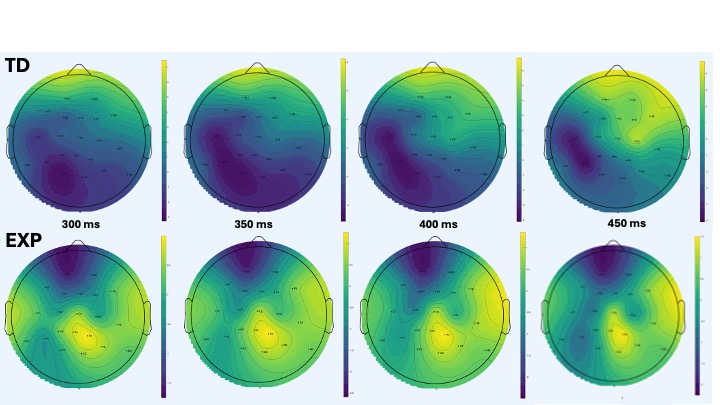Neonatal Neurology 6: Neurodevelopment
Session: Neonatal Neurology 6: Neurodevelopment
689 - Electrophysiological measures of auditory sensory processes as potential neural biomarkers of developmental complications in psychoactive substance-exposed neonates.
Sunday, April 27, 2025
8:30am - 10:45am HST
Publication Number: 689.5033
Katy Tarrit, University of Hawaii, Honolulu, HI, United States; Perihan M. Ulema, Nationwide Children's Hospital, Columbus, OH, United States; Edward Freedman, University of Rochester School of Medicine and Dentistry, Rochester, NY, United States; Ronnie Guillet, Golisano Children's Hospital at The University of Rochester Medical Center, Rochester, NY, United States

Katy Tarrit, PhD
Assistant Professor
University of Hawaii
Honolulu, Hawaii, United States
Presenting Author(s)
Background: As the substance abuse epidemic intensifies in the US, the number of in utero psychoactive drug exposed neonate continues to rise. These infants face elevated risks for short and long-term adverse outcomes, including but not limited to growth restrictions, reduced head circumference, and cognitive, motor, and behavioral impairment later in life. It is thus essential to find a novel method for early detection of such impairment and provide them with timely therapy or intervention, supporting improved developmental outcomes.
Objective: The goal of this study is to identify potential waveform differences in Mismatch Negativity (MMN) as observed on EEG in response to auditory stimuli characterizing auditory processing impairments due to prenatal substance exposure.
Design/Methods: Newborns were recruited at a gestational age of 36 weeks and above. Our cohort comprised 6 healthy and 6 exposed neonates, with 1 exposed dataset excluded from the analysis due to high noise. EEG was used to measure auditory MMN in response to an oddball paradigm. The experimental task comprised a standard tone occurring often, a frequency deviant and a duration deviant, both identical to the standard with a different pitch for the former and a longer duration for the latter, both occurring rarely. EEG responses were then measured and compared between groups.
Results: The auditory MMN is usually elicited in fronto-central areas and occurs at a typical latency of 150-250ms after onset of an auditory stimulus. The EEG topographic map for the control group shows a prominent positivity in fronto-central areas of the brain that occurs at a similar latency than is expected of the MMN. However, the topographic map for the Exposed Group presents a positivity in different other areas of the brain. Despite a small sample size for our cohort, preliminary results show a difference between in utero psychoactive drug exposed neonates’ brain topography compared to the one of their healthy peers. This may suggest brain development and auditory processes impairment at an early stage.
Conclusion(s): The proposed study aimed at identifying preliminary potential MMN differences that could characterize in utero psychoactive drug exposure. While our sample size was small, our results suggest differences in the topography of brain activity in response to auditory sounds that could relate to in utero psychoactive drug exposure. Future work will focus on expanding the study to a bigger sample size and find significant neural biomarkers characteristics of such exposure that can be correlated with language and communication delays or impairments.
Table1: Participants Demographics

Figure 1: Topographic Map of MMN Waveform Difference from 100 to 250 ms
 This figure represents the topographic map of Mismatch Negativity waveform difference between standard and frequency tones for both groups (Typically Developing (TD) and Exposed (EXP) newborns) between 100 and 250 ms, every 50 ms.
This figure represents the topographic map of Mismatch Negativity waveform difference between standard and frequency tones for both groups (Typically Developing (TD) and Exposed (EXP) newborns) between 100 and 250 ms, every 50 ms.Figure 2: Topographic Map of MMN Waveform Difference from 300 to 450 ms
 This figure represents the topographic map of Mismatch Negativity waveform difference between standard and frequency tones for both groups (Typically Developing (TD) and Exposed (EXP) newborns) between 300 and 450 ms, every 50 ms.
This figure represents the topographic map of Mismatch Negativity waveform difference between standard and frequency tones for both groups (Typically Developing (TD) and Exposed (EXP) newborns) between 300 and 450 ms, every 50 ms.
